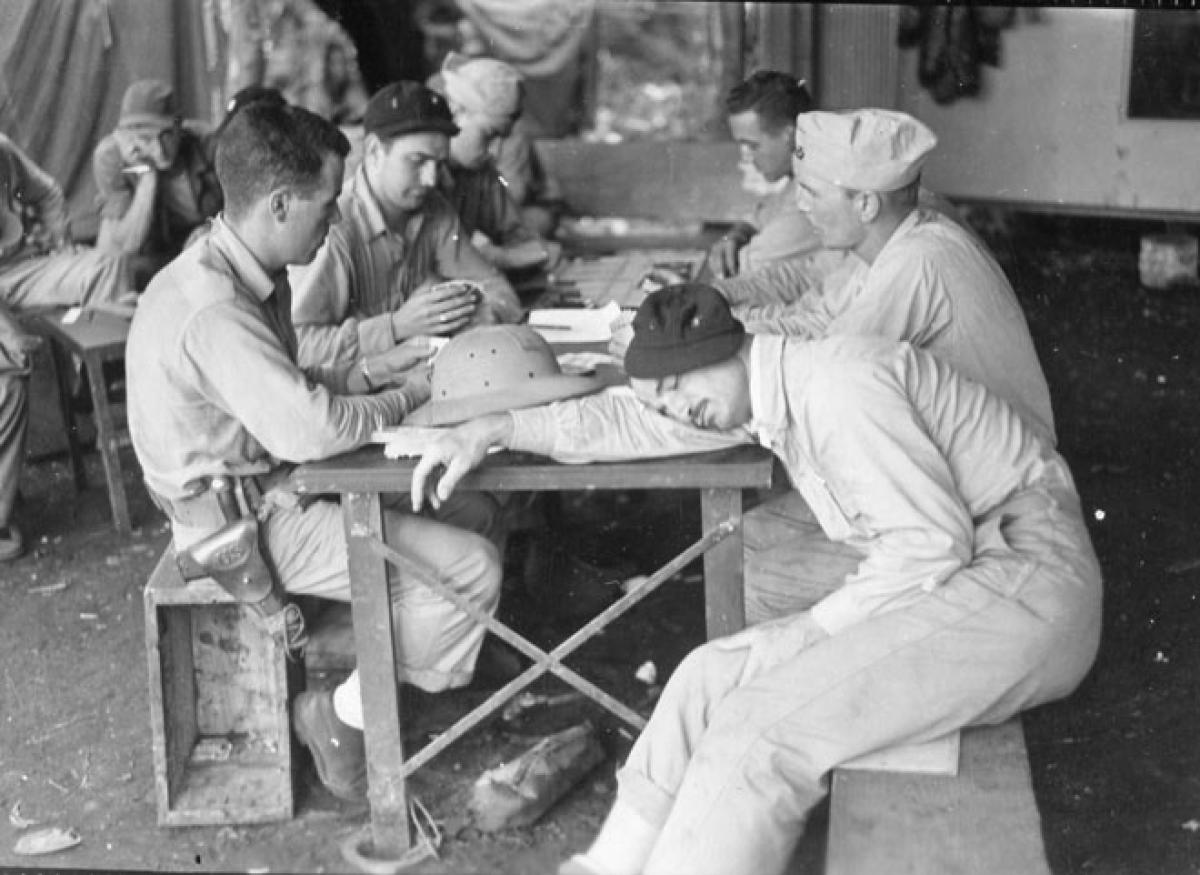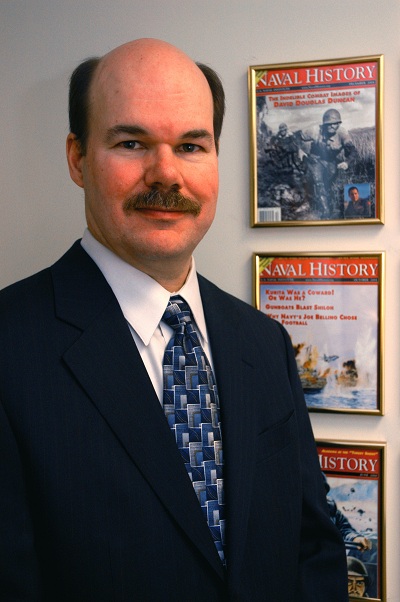The first U.S. Marine fighter pilots to arrive at Guadalcanal’s Henderson Field 75 years ago faced hard facts. For one, the Japanese flew the aerial equivalent of a hot rod—the Zero. For another, the Marines’ counterparts were seasoned veterans. Based at Rabaul, New Britain, the Tainan Naval Air Group had seen heavy action in the Japanese advances through the Philippines and Dutch East Indies, and numerous members earlier had fought in the skies over China. The Marines, on the other hand, were new to combat, a notable exception being Midway veteran Captain Marion Carl.
As retired Marine Colonel Richard Camp recounts in “Flying in the Eye of the Guadalcanal Storm,” in early July 1942 Captain John L. Smith had received orders to prepare his command, Marine Fighting Squadron (VMF) 223, for a mysterious special mission. The squadron ballooned from 8 or 10 aviators to 21, with the additions being newly minted pilots. During the subsequent hectic weeks of training, “We concentrated on gunnery more than anything else,” Smith recalled, “which was a good thing after we found out where we were going.”
Once the squadron arrived at Henderson Field, its aviators faced another reality—the rough conditions under which they would operate, which included the primitive state of the airfield and daily attacks by Japanese bombers escorted by Zeros. At night, the pilots were kept awake by ship bombardments of Henderson and heckler flights by “Washing Machine Charlie.”
The fliers’ only clothes were what they’d arrived wearing, and daily rains turned “Mosquito Gulch,” where their floorless tents were pitched, into a muddy quagmire. As for food, the aviators’ monotonous diet consisted of canned meat, dehydrated potatoes, and captured Japanese rice, all cooked over open fires. Fortunately, hot coffee was plentiful.
Despite the hardships, VMF-223 did have several advantages over its foes, which Camp explains in his feature article as well as in “The Cactus Air Force’s Humble Home” and “One Tough Wildcat.” Moreover, its pilots were quick learners, as were fighter pilots who would later serve in Henderson Field’s “Cactus Air Force.”
Another article in this issue commemorating the 75th anniversary of Guadalcanal recounts the dramatic Battle of Savo Island from the Japanese perspective. “Leading the Charge at Savo Island,” by Captain Toshikazu Ohmae, is an abbreviated version of “The Battle of Savo Island,” which appeared in the December 1957 issue of Proceedings. Ohmae provides a first-person account of the Japanese cruiser force’s transit through the Solomon Islands to Savo and a vivid description of the lopsided night battle.
A fascinating postscript is the detailed explanation Ohmae gives for the triumphant cruisers not attacking the vulnerable U.S. transports nearby at Lunga Roads. In his Proceedings article, Ohmae felt the need to reinforce the reasons by including an addendum by the Japanese commander, Admiral Gunichi Mikawa. “I believe today, as then, that my decision, based on the information known to me, was not a wrong one,” Mikawa wrote.
David Isby’s “Voyage to War” takes us to the North Atlantic before the United States officially entered World War II. The author uses the USS Mayo (DD-422) to exemplify how the U.S. Navy’s experiences on Neutrality Patrol and escorting convoys during an undeclared war prepared the service for many of its post–Pearl Harbor roles. As for the destroyer’s post-1941 service, she continued escorting convoys, rescuing 247 survivors of the troop transport Wakefield (AP-21) after she had caught fire. The Mayo later fought in the Mediterranean; off Salerno, Italy, an explosion almost broke her in two. After repairs, the destroyer headed for the Pacific, reaching Okinawa at the war’s end.
Yet another of this issue’s World War II–related pieces is a feast for the eyes. Denis Clift’s “Portrait Perfectionist” showcases paintings by Albert K. Murray of some of the conflict’s U.S. leaders. Look for more of Murray’s art in the July issue of Proceedings.
Richard G. Latture
Editor-in-Chief




